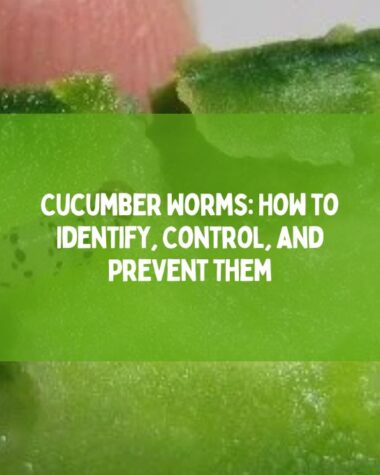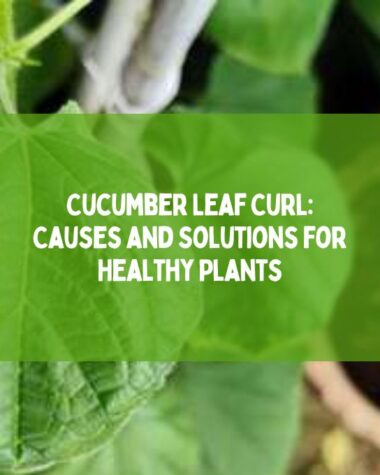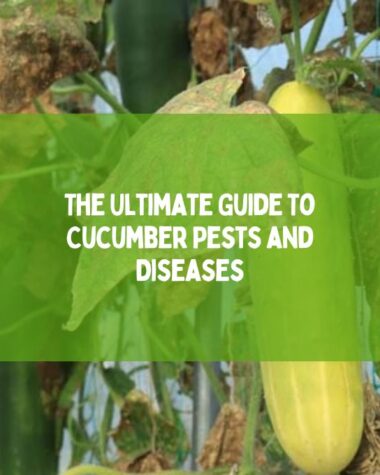If you’re looking for the best cucumber plant care tips, you’ve come to the right place. Growing cucumbers is a great way to add freshness to your home-cooked meals, and with the right cucumber plant aftercare, you can keep your cucumber plant healthy and happy for years to come.
Greetings, fellow gardeners! Are you planning to grow cucumbers in your garden?
Well, you’re in for a treat because cucumbers are not only easy to grow but also incredibly versatile in the kitchen.
As someone who has been growing cucumbers for over seven years, I’ve learned a few tips and tricks that have helped me produce healthy and tasty cucumber plants.
In this article, I’ll share some of my essential step-by-step cucumber plant care tips that will set you up for success.
So, let’s roll up our sleeves and get started!
Quick Cucumber Plant Care Overview
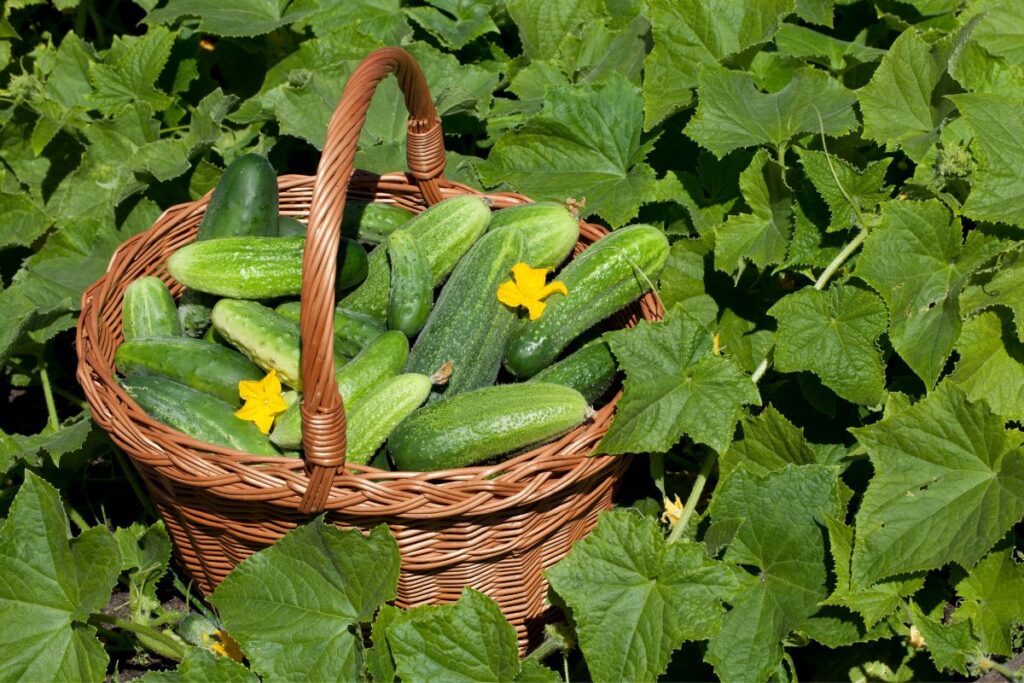
Before we get into the details of cucumber plant care, here’s a quick cucumber plant aftercare summary.
- Cucumbers are easy to care for and can thrive in most growing conditions.
- When planting cucumbers, ensure that they receive plenty of sunlight.
- Water them regularly to keep the soil moist.
- Adding organic matter to the soil can also help improve cucumber growth.
- Regularly harvest cucumbers to encourage continued production throughout the growing season.
- To avoid disease and pests, practice crop rotation and use natural pest control methods such as neem oil or soap spray.
Related Reading:
Cucumber Plant Care & Growing Instructions (A Step-by-Step Guide)

Growing a healthy cucumber plant requires careful attention to a few key elements, from the spacing of plants to the temperature in which they are grown.
Cucumbers are fairly easy to grow and can be a great addition to any garden or outdoor space. Depending on the variety, cucumbers can be grown at different temperatures, making them very versatile when it comes to planting.
With the right care, cucumber plants can grow well in a wide range of climates and produce crisp, healthy cucumbers.
Here are some of my tips for growing cucumbers. With this information, you’ll be able to provide the best environment possible for your cucumber plants and enjoy a plentiful harvest!
Cucumber Plant spacing
When deciding how far apart your cucumber plants should be, you should also think about the size of the cucumber varieties you are planting. Generally, cucumbers can grow between 3 and 5 feet in length. However, dwarf varieties may only reach a few feet.
When planting in rows, the cucumber’s cold tolerance is best respected by leaving 12 to 24 inches between rows and allowing up to 36 inches between each row. This will give the cucumbers enough room to spread their tendrils and grow their fruit properly.
If you choose to train your cucumbers on a trellis or fence, space the plants at least 18 inches apart.
Pollination
Pollination is essential for cucumber plants, as it ensures fruit production. Hand-pollination is the best way to ensure cucumber pollination, as you can make sure that every flower has been pollinated.
If hand-pollination isn’t possible, try planting cucumber companion flowers such as sweet alyssum, borage, or poppies nearby to attract bees. Make sure your cucumbers have enough airflow to keep air from getting stuck and to get as many bees as possible to visit.
Additionally, cucumber flowers should be open in the morning to allow bees to visit easily.
Soil Conditions

When it comes to growing cucumber plants, the soil is an important factor in their health and success. The soil should be well-drained, slightly acidic (pH 6.0 to -6.5), and rich in organic matter.
You can add a slow-release fertilizer to the soil prior to planting or use a liquid fertilizer to supplement the soil during the growing season. Make sure to provide adequate drainage, as waterlogged soil can lead to root rot.
Water Requirements
When it comes to watering your cucumber plants, make sure you’re providing enough but not too much. It’s best to water the plants deeply and infrequently rather than lightly and frequently.
Aim to water the soil around your cucumbers at least 1 inch per week. In other words, give your cucumber plants between 25 mm and 50 mm of water per plant per week for optimum production and fruit quality. (As per African Journals Online Research).
The soil should be moist but not soggy. If the soil becomes dry, water more often. Make sure you don’t overwater, as this can lead to root rot and other diseases. For best results, use a moisture meter to monitor the moisture levels in the soil.
Sun Requirements
Cucumbers prefer full sun and need at least 6 to 8 hours of direct sunlight per day. Plant them in an area that gets plenty of sun exposure. To ensure that your cucumbers have enough light, place them in a sunny spot in the garden, or in an area that gets maximum sunlight.
If you live in an area with shorter days, you can supplement natural sunlight with grow lights. Make sure to adjust the distance of the lights to avoid burning your plants.
Perfect Temperature
Cucumber plants thrive best when grown in temperatures between 75 and 85°F (23 and 29°C) during the day and 65 and 70°F (18 and 21°C) at night. (As per University of Georgia Research)
It’s also important to avoid cold temperatures, as this can cause the plants to become stunted. Make sure to check the forecast for your area before planting cucumbers. If extreme weather is expected, it’s best to wait until the temperatures are more suitable.
Fertilizer Requirements
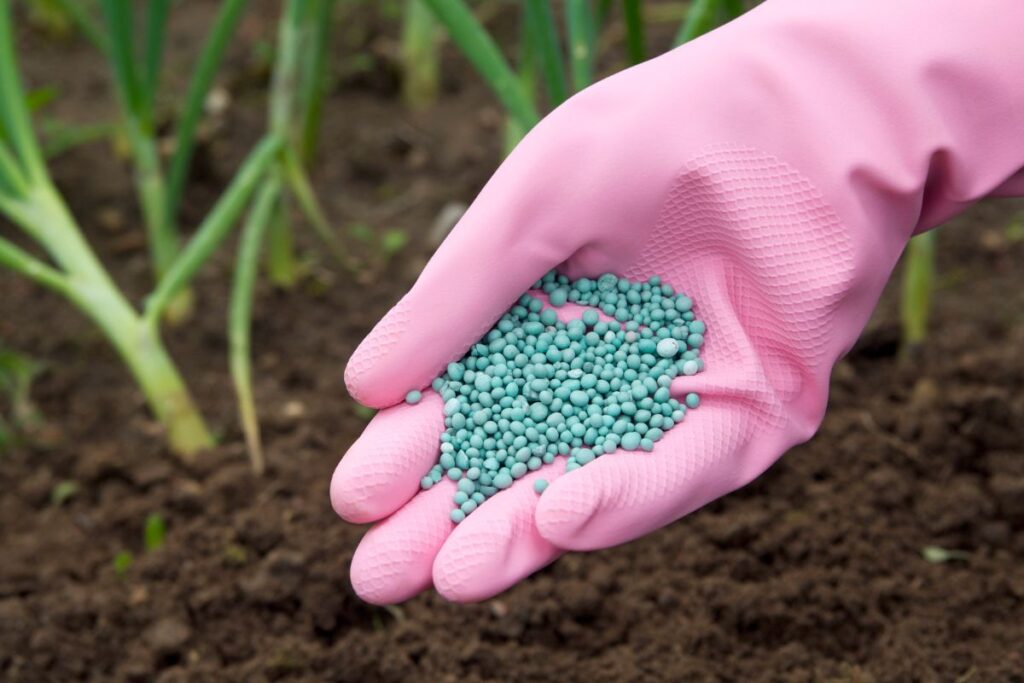
Cucumber plants need fertilizer to help them grow strong and healthy. According to New York Botanical Garden, cucumber plants need moderate nitrogen and high phosphorus and potassium. So, a natural plant food with the first number less than the last two, such as 3-4-6, is ideal.
- It’s best to fertilize your cucumber plants monthly during the growing season with a balanced, all-purpose fertilizer.
- For container-grown cucumbers, use a liquid or water-soluble fertilizer every two weeks.
- Be sure to avoid overfertilizing, as this can lead to leaf burn and other problems.
- Also, reduce fertilization in the fall, as cucumber plants stop actively growing at this time.
Related Reading:
- Why Are My Cucumber Leaves Turning Yellow?
- 5 Effective Strategies to Control Weeds While Growing Cucumbers
Pruning
It is important to prune your cucumber plants for maximum productivity and health.
- Start by removing any dead or diseased leaves and stems.
- Once the plant has developed lateral shoots, pinch off the top of the central stem to promote bushier growth.
- To control sprawling, pinch off the growing tips of vines.
- Finally, remove any excess foliage that is blocking light and airflow.
By pruning your cucumber plant regularly, you can make sure that it will produce more cucumbers and stay healthy.
Support
Cucumbers may require some form of support while they are growing, such as trellises, stakes, or cages. Support helps keep the vines off the ground and makes harvesting easier. Place supports near the base of the plant before it begins to vine, and tie the vines loosely to the support as needed.
Make sure that any supports used are strong enough to hold the weight of the cucumber plants. Keep an eye on the supports and adjust them as necessary to ensure that the plants remain securely in place.
Pest and Disease Control

It is important to regularly inspect your cucumber plants for signs of pests and diseases. Common cucumber pests include aphids, flea beetles, cucumber beetles, and mites. To prevent damage to your cucumbers, use row covers or a bar of insecticidal soap.
To avoid disease, keep the leaves dry when watering, and remove infected plants immediately. Plant diseases can be stopped by rotating crops and using seeds that have been tested and proven to be free of diseases.
Last but not least, be sure to clean up any debris in the garden, as this can increase the risk of pest or disease problems.
Related Reading:
- When to Transplant Zucchini Seedlings? Let’s find out
- How To Grow Pumpkins – A Step-by-step Guide
- 17 Plants You Can Grow With Carrots As Companions
Troubleshooting Common Cucumber Care Problems
Cucumbers are a great addition to any garden. But like all plants, they can have their share of problems. Here are some common cucumber care issues and how to troubleshoot them.
- Poor Growth: There are a variety of causes of poor growth, including insufficient or excessive fertilizer, poor soil quality, too much or too little sun, and overwatering or underwatering. To troubleshoot this issue, make sure you’re providing your cucumbers with the right amount of sun, water, and fertilizer for optimal growth. Also, test the soil for nutrient levels and make sure it’s not compacted.
- Disease Issues: Mildew, bacterial wilt, and downy mildew are just a few of the diseases that can affect cucumbers. To avoid these problems, you should rotate your crops and plant your cucumbers in places with good airflow. Also, keep the area around your cucumbers clean of debris and weeds that may harbor disease-causing organisms.
- Pests: Cucumbers are vulnerable to pests such as aphids, beetles, and mites. To control these pests, you can use a variety of methods, such as hand-picking the bugs off your plants or using insecticidal soap or neem oil sprays. You can also add good bugs like ladybugs and lacewings to your garden to help keep pests away in a natural way.
Troubleshooting common cucumber care problems is key to having a healthy and productive cucumber plant. Make sure your cucumbers get enough sunlight, water, fertilizer, and protection from pests and diseases to grow at their best.
If you’re having issues, take a closer look at your plant and make adjustments as needed to help it thrive!



